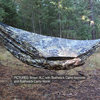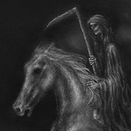Leaderboard
Popular Content
Showing content with the highest reputation on 07/24/19 in Posts
-
2 points
-
I, however, am not a Scouter coming online here for the first time. I'm a Scouter who has read almost everything published by the BSA regarding uniforms from the past 30+ years, and so I know the materials and I understand where the BSA stands on this issue. Believe me, even if I were to attend your district, council, or even regional meetings where the terms Class A and B were promulgated, promoted, and pushed, it would not be enough to "convince" me that the terms were official synonyms for Field and Activity. Only official materials published by the BSA would be enough to do that, and their2 points
-
I do find it rather frustrating when people become sticklers for ... well, let's say a lackadaisical attitude towards the uniform. I could simply repost a comment I made earlier in another thread concerning uniforms, but as far as this topic goes, I have only one line of thought: changing our personal language to refer to field and activity uniforms (as opposed to "class A and B") requires almost no effort beyond a conscious choice, and those who find such a tiny alteration of their speech challenging are hindered not by the difficulty of the task, but rather by their own attitudes and pr2 points
-
I didn't want to post this in the original thread because I didn't want to derail. I seem to see someone bring up the classification of uniforms any time the words "Class A" or "Class B" are used. I just wanted to say that this interjection of correctness (pedantry IMHO) isn't helpful or courteous most of the time. Most of the time it easy to tell if people mean "Class A = Field" and "Class B = Troop T-shirt" or some small variant of that. In most circumstances it really isn't important that the field is the only real uniform and that there isn't an accepted variant on "fully uniforme1 point
-
Yep. A result of turning the neckerchiefs into little hankies to decorate the uniform and then making them optional in troops. But using them as Scouting identity items when not otherwise in uniform has some merit. I am seeing more Scouters wearing neckerchiefs over the collar and tied at the ends with a friendship knot, in the fashion of many of our international Scouting cousins, often when not in the official uniform.1 point
-
"Class N." BSA finally came around to the idea of allowing neckerchief wear with activity uniforms and non-uniform clothing. The purpose is to make it possible to identify youth and youth groups as Scouts when they are out being active -- camping, hiking, working on service projects. That is, to raise the visibility of Scouting in the community even when youth aren't in recognizable uniforms. And as RichardB notes, it is a widespread practice around the world. If we want to promote the practice of wearing neckerchiefs when we're otherwise not in BSA uniform, giving that practice an unoffi1 point
-
Great points, Barry. Definitely a challenge for the lone (and lonely!) Scout who would be at least 100 yards from any other Patrol or adult. Wilderness Survival MB comes to mind... I'd hesitate to say "never" as that word negates all opportunity for growth and learning.1 point
-
Sadly, the Patrol Method and the notion of patrol spirit are largely extinct. BSA is totally oriented to the troop as the basic operational unit of ScoutsBSA, and has been for decades. Patrols in ScoutsBSA are for administration (collecting and distributing information and resources) and a nod to tradition, but not for operations -- by which I mean planning, preparing for, and carrying out campouts, hikes, service projects, etc. A big factor contributing to the near abandonment of the patrol as the basic operational unit in ScoutsBSA is modern society, in which families have a wide variety1 point
-
Youth protection: I have never ever been comfortable with a 16 year old sharing a tent with an 11 year old. When my son joined the troop 15 years ago, the SM encouraged close-age tenting. SM used subtle hints to drive this. Almost always, it just occurs naturally. No extra work. No extra planning. No big discussions. It was just common sense and subtle guidance. ... Also, it was easier as we started with new-scout patrols and the patrol tented together. Then, those patrols tended to stay together. The exceptions tended to be near same age. Patrols: My experience leans more and1 point
-
1 point
-
My council conducted NYLT (5 courses, 50 participants per course, 2 of the five courses were co-ed). We didn't have separate facilities for males and females, so there were assigned times for each demographic, male, female/ youth, adult to shower separately. Renovations of existing facilities would come before wholesale rebuild of facilities.1 point
-
When I was a youth (I'm 53 now), I would have thought it strange that adults were showering with Scouts. I don't think I would do it. I might have showered with other youth, but I wouldn't have liked it. I don't think I ever showered at summer camp, though, or at almost any campout, as a youth.1 point
-
BSA does seem to have arrived again in Orange County in 1920, The Santa Ana Register for November 4, 1920 solicited men as Scoutmasters for "Santa Ana Council" and mentions Scout Executive Elmer E. Heidt, often said to be the first Scout Executive in Orange County. Beyond that, things get vague, This article confirms that, as in many other areas, Scouting did not wait for BSA to arrive: "Noted local historian Phil Brigandi will discuss the history of Scouting in Orange County at the Orange County Historical Society's meeting this Thursday, Jan. 14, 7:30pm, at Trinity Episcopal Church,1 point
-
The troop no longer exists. When BSA arrived for good in Orange County, California, in 1926, my troop was offered "Troop 1" but declined. It had its cheers, song and dark green silk flag proclaiming it's birth date and number. (made by a mom who embroidered it with "Semper Paratus" and the UK fleur-de-lis) As "The best troop in all the land is Troop 43," a numeral 1 was trivial. It irritated Troop 1 no end that every Scout Saturday, Troop 43 stood at the right of the line in the Santa Ana College bowl as senior troop. The oldest, but not the original Scout troop, in what is now1 point
-
I thought every troop that predates ~1920 calls itself Troop 1.1 point
-
California Peace Scout Troop 43 first had camping, by patrils, in October, 1908 on private property in orange County, California.1 point
-
Two-Deep is required at the activity. It doesn't mean 2 adult Scouters must be within arm's-reach at all times. I would see nothing wrong with dropping qualified and competent Scouts at a location a few km away from home base. Of course I'd ensure they were prepared, and had communication devices. Don't really see much difference between this and sending Scouts off to MB classes at summer camp while Scouters stay back at camp. Or if we must be overly protective, who's to say the Scouters couldn't just follow along, not interacting or helping.1 point
-
When I was a scout, the scouts in our troop who attended the OA Ordeal weekend came back a different more mature person. The requirements of that Ordeal are considered hazing today. It seems today's culture feels that growth gained from enduring the strain of designed purposeful circumstances is not considered healthy. Barry1 point
-
I think, sometimes, the beneficiary isn't really so keen on the project, but gives the scout the OK so that he can earn his eagle. They see themselves as helping out the scout rather than being the beneficiary of the scout's project.1 point
-
I think what's likely is one of two things. Either someone did the following calculation: 1. If someone falls on a wood boardwalk we allowed to be installed, they might sue us for permitting it to be slippery or a tripping/falling hazard. 2. If someone falls on a natural trail, they can't sue us because "hey, it's the ground!" or Someone with some clout was out there and saw the leaf covered boardwalk and thought it was ugly because they just "wanted to enjoy the pristine wilderness in it's natural state".1 point
-
Good list. I'm not sure how our scouts learned courtesy during trips. But, I know that generally abuse came from younger scouts. Problems disappeared with troop age maturity. Same goes for wearing the uniform during travel, older scouts had no trouble, it's always the 12 and 13 year olds in their self-identity years who complained. Barry1 point
-
I can highly recommend Camp Rainey Mountain's Whitewater KR program. Eagle son and his Eagle best friend did this camp as their last ever youth summer camp. The CRM staff was awesome in helping two Mitten State Eagle Scouts fit in with mostly southern campers. They really made the boys feel special for travelling such a distance to camp. Believe it or not they weren't the farthest away campers. There were scouts from Texas and Florida that traveled further than they did. The guys raved about how great the rafting was and how much fun they had. There only complaint was the quality of the f1 point
-
I run a Cooking Merit Badge program for our toop. We start off with an hour meeting where the boys plan the menus that they will be cooking in the outdoors. I do the shopping for them based on their food lists (this saves money because I can combine the lists (so you don't have 4 pounds of butter when each group only needs a 1/4 pound) and can use spices and other ingredents from my pantry at home). The class is 8 boys where they are paired up into 4 groups. Then we meet in my backyard on a weekend day at 8:00. The start out by washing their hands. Then we prepare a dutch oven full of1 point
-
Interestingly, Troop JTE Objective #9 reads: "Patrol method: Use the patrol method to develop youth leaders." The various levels are likewise phrased in a way that paints the Patrol Method as a method of leadership development. This shows how far astray BSA has really gone in diminishing and muddling up the Patrol Method into something unrecognizable. The real, classic Patrol Method is about teamwork and citizenship. Teamwork in that all patrol members share responsibility and are involved in decisions. Citizenship in that the patrol is a miniature community - a gang - in which the membe0 points











